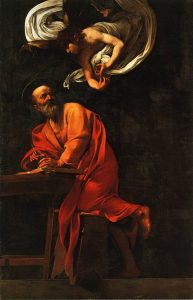A prominent theme throughout “My Name is Red” is representation vs. mimesis in the creation of art. When visiting one of the apprentices who he worked with named “Butterfly”, Black listens to his three parables that expand on this conflict. The third story combines those of the first and second to conclude, “that ‘signature’ and ‘style’ are but means of being brazenly and stupidly self-congratulatory about flawed work” (66). By this logic, to sign one’s work after imitating another’s style through one’s own interpretation is to reveal a flaw. This concept around one’s signature even used when the murderer worries that he has left traces of his own style on the dead body.
If we compare this sinful association with style to a Western philosophy of art, especially in periods of the Renaissance and Baroque, we find a direct conflict. It is a common practice within the study of art history to train your eye to recognize distinguishable qualities in paintings that allow you to identify their artists. For example, in the painting below by Caravaggio, The Inspiration of Saint Matthew, one can identify his style in his use of chiaroscuro, the balance between light and dark that provides the illusion of volume, and tenebroso, shadowy and murky light. As one looks at Caravaggio’s paintings over time, one can begin to recognize the typical attributions of his figures.
The ability to create something distinguishable and to recognize styles of others are two qualities that are esteemed in the Western art world. As illustrated in the novel, this difference partly stems from religion. I wonder what Western art during these periods would look like if concepts of representation for God and Jesus were the same as those for Allah?

